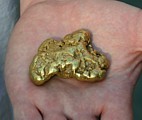
Investing In Gold and Silver Mines
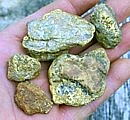
 |
Investing In Gold and Silver Mines |
 |
Interested in investing with companies that mine gold and silver? Before you give that buy order to your broker, take a look at the following information......
| With
the strong gold and silver prices we have had for the last couple years, exploration for
gold and silver is greatly on the increase around the world. Junior (smaller) exploration
forms are out sampling, trenching and drilling their properties. In Nevada, its hard to
get a knowledgeable and well qualified drill crew to come out with their rig and drill
your property – there is a waiting list. Almost as soon as the drill samples are
collected they are whisked off to be assayed and not long afterward the mining and
exploration companies are reporting their results. The stock price of successful
exploration companies with a new find may increase 4 fold and more in a matter of a few
weeks. This has happened a number of times in recent years. With the strong price of gold
and silver, and the potential for significant gains, many investors are seriously
considering mining and exploration company stocks for inclusion in their portfolio.
Unfortunately, the geologic information in these press releases can be confusing and their
interpretation difficult. So how is the
investor to sort through and interpret all these reports with their technical information
such as geologic maps and sections when they are offered to the investing public? First,
its important to remember that these small exploration companies want to put their best
foot forward, so the data released to the public will tend to be the most positive that
they have found. Rarely will a company put out a press release to say something like
“We drilled 25 holes, spent over $400,000 and didn’t find a dang thing!”
Even if all that was found was a little sub-economic mineralization, they will tout that
and try to make those results sound as hopeful as possible. Most small exploration
companies are run by folks who own stock or options and so they have a significant vested
interest in seeing the stock price go up. This is why you should keep in mind most press
releases are written with an eye toward promoting the company’s share price. |
||
Failing to find a significant ore deposit on the first round of drilling is not usually the end of a project, as sometimes it takes a few rounds of drilling to really find the location of the ore bodies - if they are present. So one discouraging press release is not the end of the line. On the other hand, you can chase around a large property forever hoping to find ore. I know of one company that has been drilling on a certain site for many years – the site formerly produced some very rich ore. They keep finding small amounts of mineralization here and there, but no large bodies of anything great, and with those kinds of results, its tough to know when to give up and quit. Before investing in a company, be sure to do your homework and find out everything you can about the company you are interested in. Press releases are a common source for information, but be sure to also look at the company websites. Many companies will have a copy of the report they made at the last stock holders meeting and this will often have much more detailed information than is offered in simple press releases. |
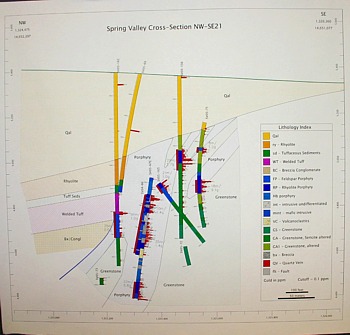 |
|
Carefully
consider any information and recommendations from advisors, newsletter authors and
analysts as well. The quality of the information they provide varies quite a bit. Many
have company ties with, or ownership of, the stocks they are recommending, so their
comments may not be without significant bias. In addition, while most are very good
salesmen, they may or may not have any particular knowledge of geology or expertise in the
field of mining itself. |
||
| Both
exploration and mining are risky businesses – There is a great potential for gains,
but also great potential risk of loss. The most famous story of risky mining stocks in
recent times is BRE-X, a penny exploration stock that rocketed to over $200 per share and
not too many months afterward rocketed right back down to zero. People who have
investigated the case believe the assay samples from their drilling were salted –
gold was added to them to artificially inflate the results. When the deception was
discovered, the price of the stock plummeted. While there are many serious and honest
individuals in the mining industry, mining and exploration company stocks have been a
vehicle for dishonest promoters for centuries. Nearly 100 years ago, the famous Nevada
mining stock promoter George Graham Rice penned “My Adventures With Your Money”
from his cell in jail. Careful consideration of all the data available will help you
select those companies with the greatest chances for success. Here are some facts and possibilities to think about when reading mining company websites and press releases and pondering an investment in mining stocks: |
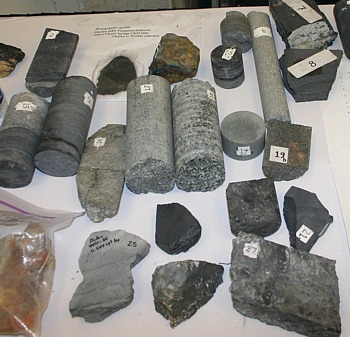 |
|
| Drill hole grades, widths and depths: This is probably the point where most new investors stumble. One of the most common ways for an exploration company to test a property and see if it has any ore is by drilling. Depending on the type of equipment used, the drills either produce a core of intact rock, or a chip sample. Assays of the metals contained in the sample rock are made and the results reported as the amounts of metal contained in a ton of rock (sometimes metric tonnes are used). Intercept grades and widths are perhaps the most commonly reported technical information in mining and exploration company press releases. Potential investors ask: ”What do these numbers really mean and how should they be interpreted?” Here are some rough guidelines for gold mining in politically stable, favorable working environments:Assay grades showing grades less than 1 gram of gold per ton may indicate mineralized rock, but are usually not economic. Results in this range may indicate some additional drilling may be advisable, but they do not show any material that could be mined and processed at a profit. Grades of 1 to about 8 grams per ton indicate material that is suitable only for surface mining as it is much lower cost than underground. Grades greater than 8 grams of gold per ton might be mined by underground methods as well as from the surface, depending on conditions and proximity to the surface. Again, these numbers are only rough guidelines as to what can be profitable mined, as profitability depends greatly on many factors. Grades reported in ounces per ton may be multiplied by a factor of 31.1 to convert ounces per tone to grams per ton. Width of the intercept is also a critical factor. If you hit intercepts of less than 10 feet of ore, especially at depth, this is only minable by underground methods. Widths up to 50 feet are minable underground in most conditions, but may be mined by open pit if near enough to the surface. Greater than 50 feet widths on an ore body would be normally be surface mined if within a couple hundred feet of the surface, but may be mined underground using special techniques. Generally, surface mining methods are cheaper on a cost per ton basis, so where the ore could be mined by either method, surface mining is preferred as it is more profitable. So if your company reports a 10 foot intercept of 3 grams gold per ton (around .1 oz/ton) at a depth of 200 feet, that is really too small for surface mining, and too low in grade to be mined underground. So by itself, that is an uneconomic intercept, even though it indicates some mineralization is present. On the other hand, if your company reports an intercept of 200 feet of 3 gram per ton ore from 150 to 350 feet of depth along the drill hole, that is a much more positive indicator, and if further good intercepts like that one are found, it may indicate a substantial body of surface minable ore. |
||
| Quantities of minerals discovered: If a company hits a few pockets of high-grade rock, but fails to find any large quantity of material, then the deposit may not be economic. Some time ago, a company I was interested in hit a couple drill hole intercepts of about 5-6 feet of 8 ounce per ton gold - now that’s very high grade material. Unfortunately, they drilled all around there and got only low grade uneconomic vein intercepts – it was just a hot spot and not enough tonnage to even think about making a mine. A few hot drill intercepts may be exciting, and send the stock price soaring, but if you cant find more good intercepts and identify at least a few million tons of economically viable rock, you don’t have much prospect of a building a mine. Once it is revealed that the surrounding drill holes don’t show much, the price of the stock is likely to head quickly back to earth. |
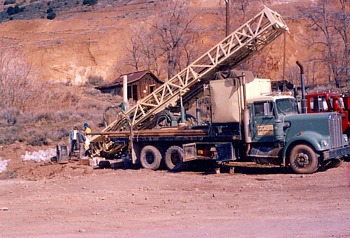 |
|
| Local costs and difficulties such as finding qualified personnel: The actual location of an ore deposit and the accessibility of the site can make a huge difference in the cost of mining the ore and recovering any valuable materials present. So it’s a lot easier to get supplies and hire qualified workers in Nevada than it is in the remote interior of Alaska. On the other hand, it’s a lot easier to supply your mine in the interior of Alaska than it is in the remote parts of Bolivia and some other third world nations. Poor access, bad weather, and remote locations with few qualified workers nearby can greatly increase the costs of mining. This means that some deposits, which would be viable if located in Nevada, would not be politically viable in the interior of Alaska, where conditions are more difficult and operating costs significantly higher.Political risks: While you can pretty much figure your costs and legal requirements in stable countries like the US, Canada and Australia, it is not the same in story in some small third world nations. There, your permitting plan might be to bribe the government officials and hope for the best. Unfortunately, coups and over throws can be commonplace – then perhaps you will find out that you bribed the wrong folks. It can even happen that once you are pulling millions of ounces of gold out of the ground, the dictator decides that your bribe is too small and he nationalizes your entire operation because wants it all! In those sorts of situations, stock prices will plummet. |
||
|
Management: Does the Management of the company have the ability to get the project financed and the qualified folks to permit and build a mine? Sometimes the talent needed to promote a property and attract exploration funding is not the same as what is needed for an ongoing mining operation. |
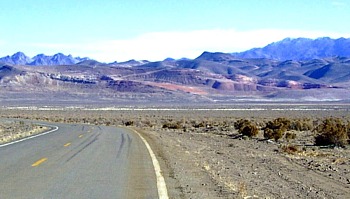 |
|
Unforeseen
problems related to actual mining: You
never know what unplanned problems can happen while mining. Your mine may unintentionally
tap into a lake and be flooded (as happened at the rich Cigar Lake Uranium mine), or the
high wall of your open pit mine may cave in burying your ore under millions of tons of
waste (as happened on the Carlin trend in Nevada). Your miners may strike, there may be a
hazardous material spill, or any one of hundreds of other disastrous possibilities. In
fact, there are a number of examples of situations where every thing seems to be going
along just great, but unplanned and unexpected events can cause the efforts of the mining
company to go very wrong. |
||
Want to know a little bit more about this crazy prospector guy? Well, here's a little bit more about me, and how I got into prospecting: Chris' Prospecting Story Interested in seeing more gold? Here are some interesting photos of beautiful Gold Nuggets I'm the associate editor for a well known Gold Mining Magazine - so check out their website for more information and my latest articles.